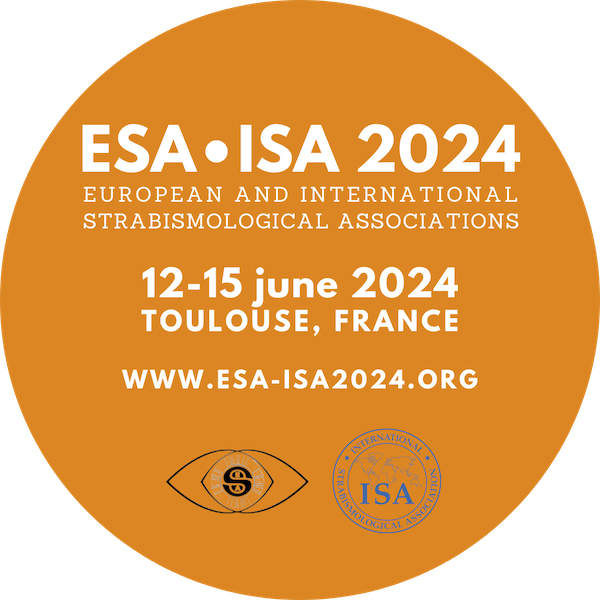
Session: Poster session A
Refractive or deprivation amblyopia in Down's syndrome - is genotyping for inherited retinal dystrophy necessary?
Introduction: This case of a 13-year-old girl with Down’s syndrome (DS), bilateral amblyopia, and high myopia is aimed at linking the novel variant IMPDH1 c.134A>G, p.(Tyr45Cys) to a clinical phenotype and emphasizing the importance of discerment between deprivation and refractive amblyopia.
Methods: A 13-year-old girl with DS, born with hearing loss, was diagnosed with high myopia and bilateral amblyopia at the age of 4. In 2022, a crosslinking of both eyes was performed due to keratoglobus. Phenotype including: high myopia, keratoglobus, and hearing loss prompted a consideration of possible inherited retinal dystrophy (IRD).
Results: On clinical examination her best-corrected visual acuity (BCVA) was 0.8 logMAR on the right eye (RE) and 0.7 logMAR on the left eye (LE). She manifested RE intermittent exotropia with local stereopsis of 100 s of arc. Retinoscopy demonstrated -11.50 Dsph RE and -12 Dsph/-0.75 Dcyl ax 70° LE. Optical biometry measured axial length values of 25.72 mm RE and 26.04 mm LE, and keratometry of K1 = 50.55 D ax 3° and K2 = 51.86 D ax 93° RE, and K1 = 50.25 D ax 27° and K2 = 51.32 ax 117° LE. On ultra-widefield imaging posterior staphyloma was evident. Sequence analysis using the retinal dystrophy panel identified a heterozygous missense variant IMPDH1 c.134A>G, p.(Tyr45Cys) labeled as variant of uncertain significance.
Conclusions: Pathogenic variants in IMPDH1 are associated with autosomal dominant retinitis pigmentosa 10, and Leber congenital amaurosis 11. It is important to distinguish between deprivation and refractive amblyopia due to different prognosis and follow-up, therefore the clinician should always aim to correlate phenotype and genotype in order to make the correct diagnosis. The patient, although suspect to have IRD, is heterozygous for IMPDH1 variant and does not manifest any disease characteristics. Therefore, we do not expect further retinal disease progression, and crosslinking could be aimed at restoring BCVA.